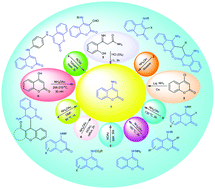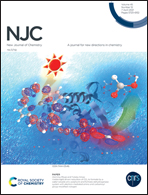4-Aminocoumarin derivatives: synthesis and applications
Abstract
4-Aminocoumarins and their related compounds represent an important class of a versatile scaffold in organic synthesis and have been consistently used as a building block in organic chemistry as well as in heterocyclic chemistry for the synthesis of different heterocyclic compounds. Moreover, 4-aminocoumarins attract more and more attention because of their wonderful biological applications such as antiproliferative, antimycobacterial, antibacterial, antiplatelet, antiglycant, antioxidant, antitumor, antistrogen, enzym inhibitory, and anticancer activities and their natural occurrence. The presence of an amino group and enamine carbon enhances their chemical reactivity. Meanwhile, chemists have developed various synthetic methodologies for the synthesis of such a privileged precursor. The purpose of this current review is to demonstrate different synthetic methodologies for the construction of 4-aminocoumarin derivatives and the investigation of their biological and medicinal applications.

- This article is part of the themed collection: 2021 Focus and Perspective articles


 Please wait while we load your content...
Please wait while we load your content...